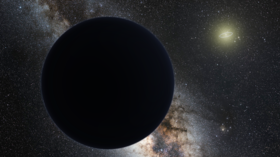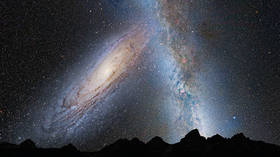We may finally have a way to find mysterious Planet 9, but there’s a catch…

The enigmatic Planet Nine, an unknown gigantic mass lurking at the edge of our solar system, has captivated scientists and conspiracists alike for years, but we may finally have a method of finding it once and for all.
Planet Nine is the name given to a titanic object that interrupts the orbits of objects out in the Kuiper Belt beyond Neptune. It is believed to be somewhere in the region of five times the mass of Earth. We don’t know exactly what it is. We don’t know exactly where it is, and we don’t even know where to begin looking for it. But now a team of researchers believes we may already have all the data we need.
According to study authors Matthew J Holman, Matthew J Payne, and Andras Pa, NASA’s Transiting Exoplanet Survey Satellite (TESS) may have already spotted the elusive beast, we just haven't had time to search for photos of it in the vast troves of data already captured.
TESS hunts for exoplanets using the transit method, meaning it lies in wait watching patches of the sky, waiting for something, anything, to cross in front of the distant starlight. However, a single exposure couldn’t possibly capture something as distant and faint as Planet Nine, which is where another technique, known as digital tracking, would come in.
Digital tracking involves the stacking of images from the same field of vision on top of one another, thus increasing the brightness of distant objects. The technique has so far been used to great effect in finding new asteroids, but has yet to be used in the hunt for Planet Nine or whatever the mysterious, massive object is out there beyond Neptune.
Also on rt.com Runaway Star ejected from Milky Way’s ‘Heart Of Darkness’ at 6 MILLION kmph (VIDEO)However, because Planet Nine is a moving target, some calculations (or guesswork in layman’s terms) are required to figure out its trajectory as it moves across the void of space. This would then, theoretically, allow scientists to stack the images and enhance the brightness of the object.
“To discover new objects, with unknown trajectories,” the researchers wrote in their paper, “we can try all possible orbits!”
Digital tracking has been used in conjunction with the Hubble Space Telescope to discover several objects beyond Neptune, so the technique is proven, however, the task is somewhat gargantuan.
While it is theoretically possible, practically speaking, anyone hoping to find Planet Nine in the TESS data would have to test for all possible orbits in a Herculean task that even the world’s most powerful supercomputers would need some time to accomplish, for now at least.
Also on rt.com Google proclaims ‘quantum supremacy’ with new supercomputing breakthroughLike this story? Share it with a friend!














